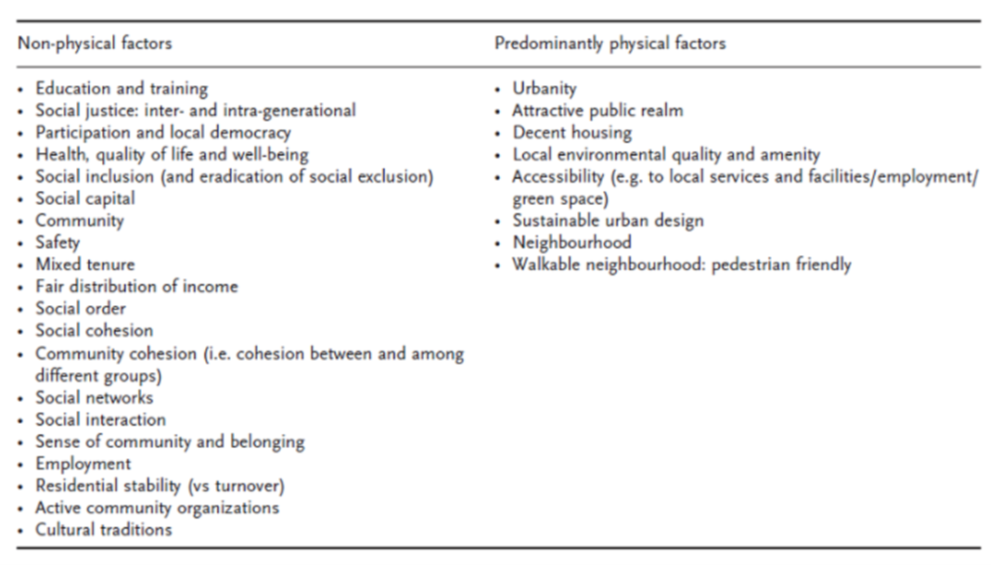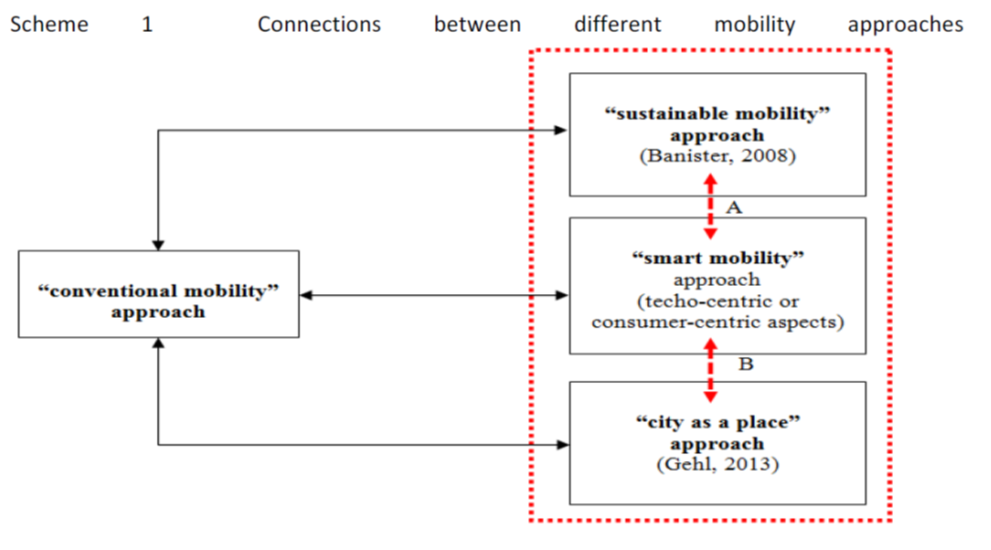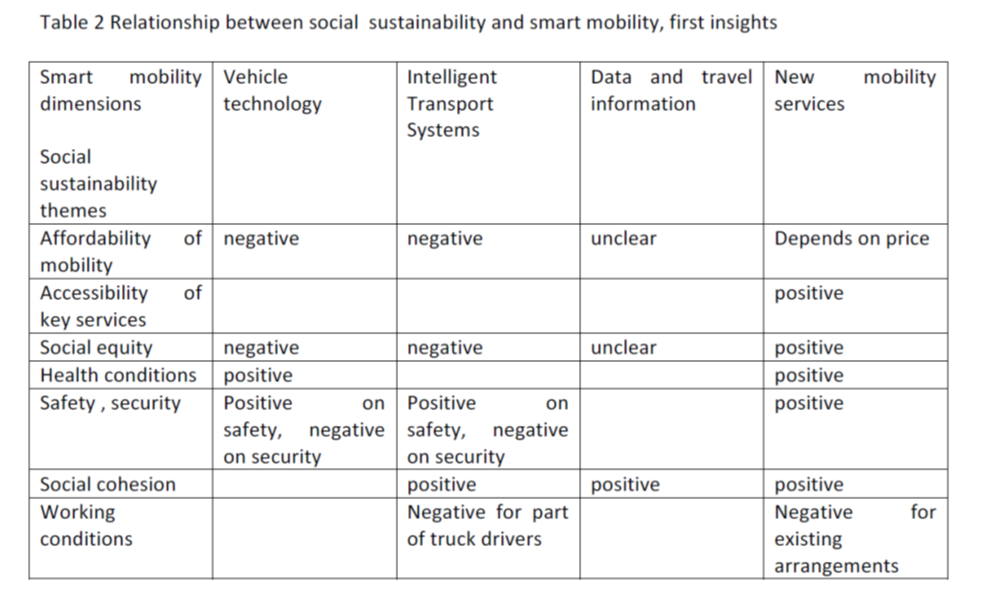
Researcher Prof. Dr. Hans Jeekel from the Eindhoven University of Technology, Eindhoven Netherlands, published an article in the Journal “Transportation Research Procedia” regarding Social Sustainability and Smart Mobility. The article provides an up- to-date review on this issue. Here are some of the key issues.
In the Brundtland Report (1987) social issues were considered important in reaching sustainable development. However, 1987 onwards attention for these social issues lagged in the professional and in the academic world behind environmental or ecological issues and behind economic issues. In recent years, more attention is given to social sustainability. The second concept, smart mobility, is newer. Smart mobility, often used in conjunction with smart cities, is still a rather undefined concept. The concept presents the connotation of a more active orientation to mobility problems and solutions than its “elder brother”, sustainable mobility, thus yielding enthusiasm in business circles and with governments.
Social sustainability in built environment and mobility
In the years after the Brundtland Report (1987) the role of cities and urban areas in sustainable development has become more prominent. Megacities did develop, and now the majority of these cities, containing more than 10 million inhabitants, can be found in the developing world. In 2008, for the first time, more than 50 % of the world population were urban dwellers, and this will lead to a projection of almost 70 % urban dwellers in 2030. Especially in the developing world, there is a great challenge to reach sustainability in cities.

Holden, Linnerud and Banister develop the concept of the “sustainable transport space”. That space can be defined in four dimensions:
- Impacts of transport activities must not threaten long-term ecological sustainability
- Basic transport needs should be satisfied
- Intra-generational transport equity should be promoted
- Intergenerational transport equity should be promoted
Social sustainability is mostly related to the second and third dimension. In the second dimension, affordability of mobility is a core issue. In the third-dimension transport equity means that access to transport should not vary systematically across population groups. Accessibility is the essential issue.
It’s mostly observed that the now existing mobility system in the developed world is unsustainable, as mobility leads to pollution, creates safety problems and takes a big share of the world’s energy resources. The current mobility system in Western countries is dominated by the car and by the socio-technological “regime of automobility ” .
This system now expands over the globe. It will be difficult to change the mobility system as the technical aspects of the transport system (vehicles, infrastructures, etc.), the organizational models (e.g. individual car ownership, car and bike sharing, and ticketing schemes), the regulatory framework, the user habits, etc. are all co-evolving. These interactive dynamics create path dependencies which make it difficult to alter the overall direction of the development. Making the mobility system sustainable would require a long-term transition where technical and non-technical developments align in mutually reinforcing processes.”
Other researchers, (Berger et. Al.) propose a transition model based on three lines; people can travel more efficiently, they can travel differently, and they can travel less. All three lines could present innovations, however; “travel, in particular everyday travel, is embedded in broader routines that help people organize their daily lives “ This means that reaching social sustainability in mobility needs to break with these routines and habits.
Smart Mobility
Smart mobility is a newer concept in mobility that has attracted attention in the last decade, especially from enterprises and governments. However, as yet this concept has not completely reached the academic world. A web search visiting 14 sites gives a basic orientation on the content of this concept. From the websites of the Technical University Eindhoven, the following content for smart mobility arises.
- Smart mobility is about vehicle technology.
- Smart mobility is about ITS, Intelligent Transport Systems. Work is being done on connected cars, on cooperative adaptive cruise control, on intelligent traffic management, on platooning of trucks.
- Smart mobility is about data. Work is being done on real – time passengers and travelers information, on personalized travel assistance, on logistics planning, on IT- systems matching supply and demand for mobility, on big data solutions, often in relation to smart city developments, on security architectures for generated traffic data.
- Smart mobility is about new mobility services. Work is being done on optimal utilisation of existing vehicle and truck capacity, on ridesharing, on car sharing, on new biking systems, on integration of mobility modes, on using smartphones for facilitating mobility demand and ticketing, on on- demand ride services, on the use of individual cars as public transport and broader.
These four dimensions – vehicle technology, ITS, data, new mobility services – define the scope of smart mobility. Smart mobility is user- oriented, technology oriented, mostly car- oriented, IT- oriented, and developed world- oriented. And, quite important, smart mobility is action – oriented.
The author understands that smart mobility needs to broaden its approaches towards sustainable mobility and towards smart city and city as a place- approaches, to become an active and comprehensive strategy helping to reach sustainable development.

Exploring the relationship between social sustainability and smart mobility
Is smart mobility socially sustainable?
Vehicle technology in smart mobility is helpful in reaching greater fuel efficiency, in reaching greater safety in cars, and thus can be considered positive on health and safety.
The data dimension is on real – time passengers and travellers information, on personalized travel assistance, on logistics planning, on IT- systems matching supply and demand for mobility, on big data – solutions, often in relation to smart city developments, on security architectures for generated traffic data. From a viewpoint of social sustainability the central question is whether this work will remain car-based or will be broadened to other forms of mobility. When it remains car -based, car drivers get an advantage with respect to accessibility of key services. This could lead to higher car densities, and thus to the possibility of more car traffic. Certainly, in urban areas this could create health and safety problems.
There is also the perspective of far less individual car traffic, of far better use of existing car capacities, of an impetus to social cohesion. Potentially real time information and personalized travel assistance could be of great help for everybody that needs to be mobile to get access to services. Social cohesion could win with real-time information
The researcher points out that from this first assessment a mixed picture on the relationship between social sustainability and smart mobility arises. In this respect, the most important questions seem to be:
1. Will the focus on creating technology for basically the highest car segments remain? When yes, smart mobility will be – certainly temporarily- “toys for the richer boys”, and the divide in the car fleet will be broadened, with disadvantages on social equity
2. Will personalized travel information be offered and made available for all types of “mobilists”, or will it remain a service for car drivers only? In this last situation the buyers of this personalized information will get an “accessibility profit”, with disadvantages on social equity
3. On new mobility services, will the possibility to reach far greater mobility capacity in existing trucks and cars, via ridesharing, via on demand ride services, be picked up, or even made obligatory? When not, this remains a nice narrative to sell new car technologies. When yes, we will reach a new paradigm, with cars as public transport, with less trucks on the road, and with advantages on safety, health and social cohesion.

Some preliminary conclusions
The study concludes that from a perspective of social sustainability, smart mobility could develop along two basically different scenarios.
The first scenario is that cars will become so attractive, with easier use, and with more advantages for car drivers via personalized information, that more cars will be bought, and that sprawl will be encouraged. This scenario scores negatively on social cohesion, on equity, and on accessibility of key services. Non-car drivers will get disadvantages, and problems with scarcities in space (parking, driving in urban areas) will grow.
The second scenario is that with new technologies, it will become easier to share cars, to utilize their full capacity with ride sharing and on demand rides, meaning that cars can become part of the full spectrum of mobility options, with far less cars needed. This scenario scores negative on those working in the transport sector, but positive on social cohesion, equity and accessibility.
It could be expected that health and safety conditions will be better than nowadays in both scenarios, while affordability will be at least a temporary problem for the next decade, with poorer households initially not being able to buy the smarter cars.